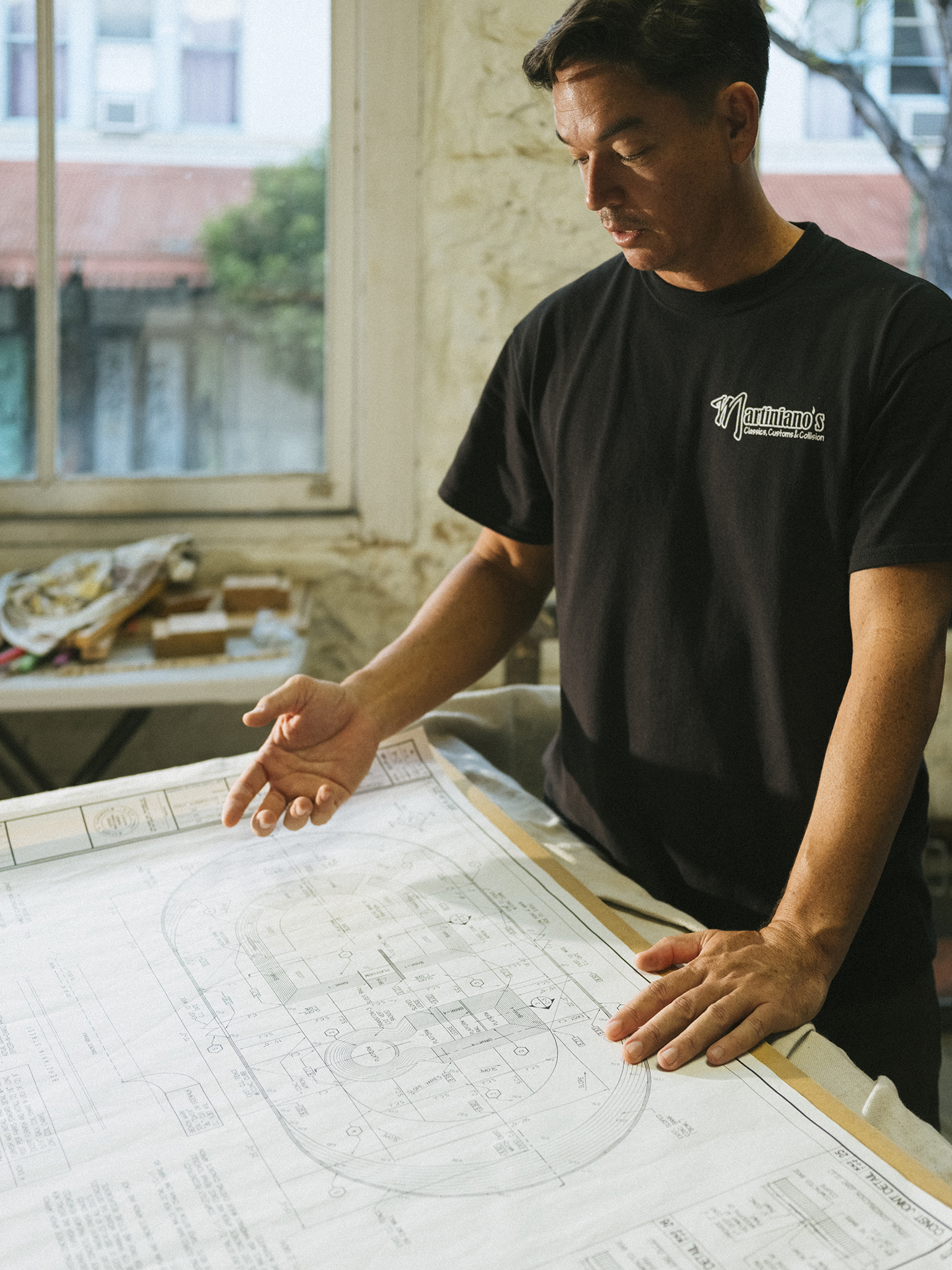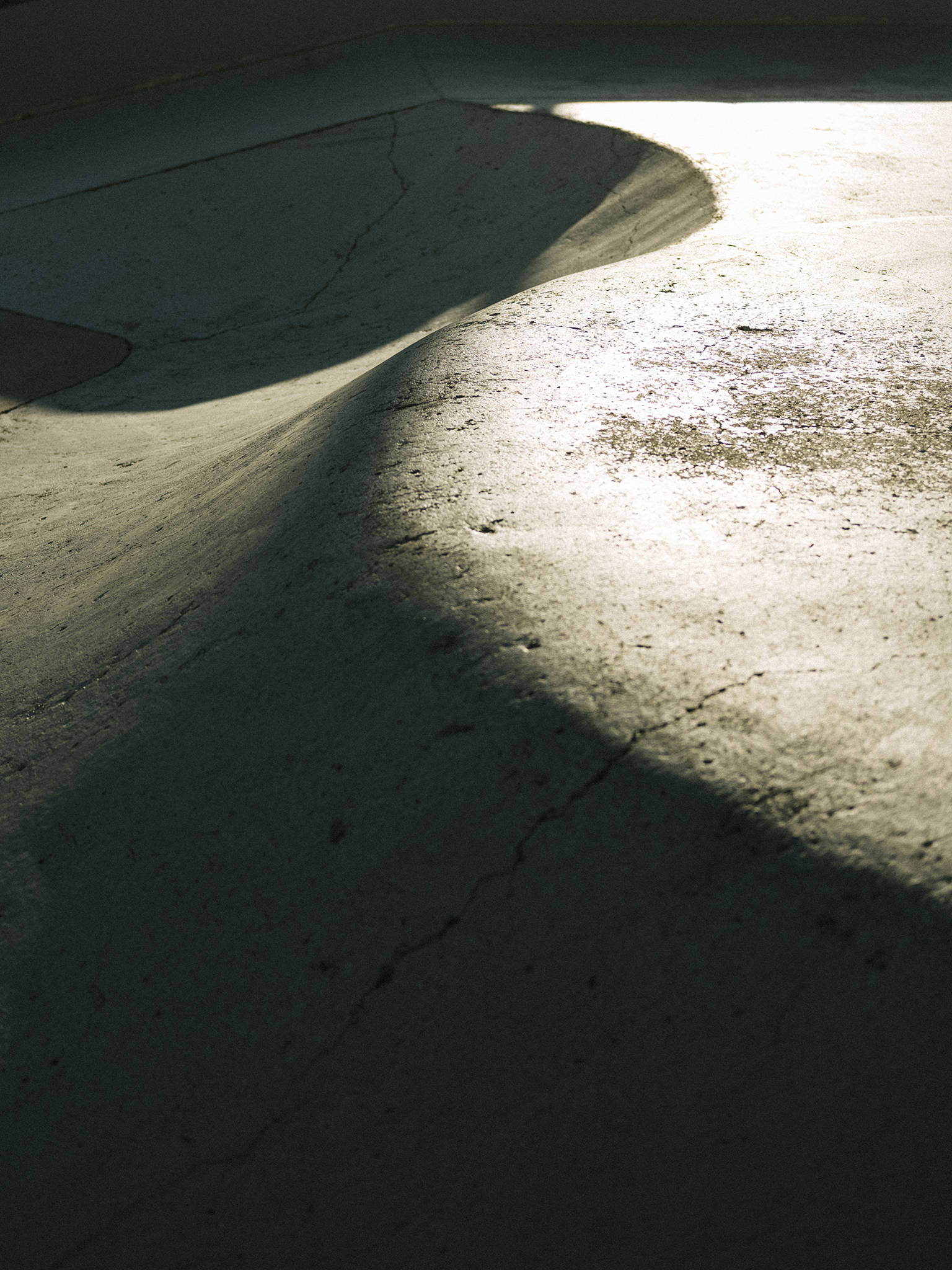Without the involvement of island skaters, Honolulu’s darling skate parks might never have materialized.
Images by Lila Lee
The useless wooden toy that is the skateboard comes packaged in a culture of fun that permeates and dominates every aspect and every hour of its user’s life. Unlike the weekend tennis player or casual smoker, skateboarding, for those deep in it, is the most important thing in their life. From clothing to music to humor to media, skateboarding is less of a hobby and more of a cult, and like all good cults, they require adequate facilities.
In Honolulu, two sites quickly come to mind: ‘A‘ala Skate Park, located in the festering heart of Chinatown, and Makiki Skate Park, tucked beneath the Keʻeamoku Street overpass. Both of these skate parks are fairly new to the local skateboarding community (ʻAʻala has existed in some form since the 1970s, Makiki since 2001), and their existence is due in part to Chad Hiyakumoto.
Hiyakumoto, who is the owner of APB Skate Shop, grew up on Maui, spent his youth skateboarding, amassing a small fortune as an adolescent selling popsicles out of his front door and investing those thousands of dollars earned. While attending the University of Hawaiʻi at Mānoa in the late-1990s, Hiyakumoto noticed Honolulu’s dearth of skating facilities. While Hiyakumoto was attending college on O‘ahu, Maui had built several fairly good wooden skate parks, and when Hiyakumoto would visit home, he often wondered why that island had been bestowed these facilities despite Oʻahu having several times the population of skaters.
After earning a degree in civil engineering, Hiyakumoto got a job as a construction engineer in Honolulu. His co-workers built him a skate box — a long, rectangular wooden box with angle-ironed coping for grinding and sliding on a skateboard — which he would bring to ʻAʻala for he and his friends to skate. They found loading and unloading the box every day to be extremely cumbersome, so Hiyakumoto made a request to the Mayor’s office. “I wrote something like, ‘I bring this box in and out every day and it sucks. Can I leave it there?’” Hiyakumoto remembers. The City answered no, but suggested he get involved with the Department of Parks and Recreation, with whom Hiyakumoto and his friends began to advocate planning for the construction of designated skate parks.

A good skate park is not only a place where skateboarding happens, but also where it lives, shelters, and fosters a community.

“We would have meetings with City officials where my friends and I would explain exactly what a skate park is,” Hiyakumoto says. “They weren’t sure what it was or how it worked.” The City’s main concern was that “people were going to die,” so Hiyakumoto would spend a lot of time diffusing their anxieties and imaginations. “It was a lot of explaining, and maybe some sugarcoating,” he admits.
The City had allotted the area under the overpass for a skatepark, but there was a major issue: the architects hired to design the park didn’t skate. It isn’t enough to simply have a park, it must also be good. “A good skatepark to me is simple obstacles, good flow, and a place to skate flat and hang,” says Jordan Cheng, a Makiki Skate Park staple. “Make sure that the flow is good, and that you don’t have one pathway crossing another,” adds Hiyakumoto, specifying that obstacles must be at specific heights, angles, made of specific materials, and placed in such a way that promotes flow.
Flow, though, is hard to explain. Essentially, flow is the skateboarding synthesis of momentum, time, and space. When a skater evaluates the architecture of a building, for instance, they see how items can be combined in a sequence most naturally. An anticipated chain reaction formulates in their minds: How can they get the speed necessary to grind this box, and if they grind this box, will they have enough speed to slide on the next? And after they do, which obstacle will that momentum take them toward, and how much space and time do they have to prepare for it? A good skate park legitimizes this logic. The layout will consider direction, speed, momentum, and empty space as carefully as occupied space in order to create paths of flow, where a skater will be able to be hit obstacle after obstacle without ever being brought to a stop.
Upon viewing the plans for Makiki, it was frighteningly clear that the architects did not understand these principles. ‘‘I saw what they were building and was like, ‘Wait, what is this? Why are you doing this?’” Hiyakumoto recalls. In addition to being bad for skaters, the plans were also wasteful for the city. For example, the original plans had every edge of the pyramid lined with angle iron which does nothing to make the obstacle safer, more structurally sound, or plain fun for the skater. In fact, if anything, that additional metal might get in a skater’s way. “I pointed out all the things they didn’t need, so they let me do anything to the plan that was a no-cost change,” Hiyakumoto says. “With that money saved, I asked to throw a rail in. That was my foot in the door with the City.”

With the renovation of ʻAʻala in 2002, Hiyakumoto took on a similar consulting role, having spent countless hours skating the park in its then state. He advised architects on the heights, placement, and angles of various elements. “I imagined what obstacles would be fun, walk over to where I thought it should go in the park, and prop a piece of wood up to try and figure out the angles.”
A good skate park is not only a place where skateboarding happens, but also where it lives, shelters, and fosters a community. “A park can have deeper value as a hub for community,” says Travis Hancock, a skateboarder and founder of HI Sk8 Films Festival. “Ideally somewhere close to a lot of real-world skate spots but also a bit removed from state and corporate surveillance.”
Makiki Skate Park’s parking lot is as important, if not more so than the park’s obstacles. Just outside the park’s entrance, on any given afternoon, you will see up to 50 community members of varying demographics, skating, speaking, encouraging, laughing, and bonding together. Particularly for at-risk youth, finding community through skateboarding and a proper skate park can be life saving. “This is a place, the only place I can find, for me and people like me, where I feel accepted and understood,” one teenage Makiki regular testifies. “I get to have fun, laugh, move, make friends. It’s a rat cage under a bridge, but it’s mine. Where else would I go?”

